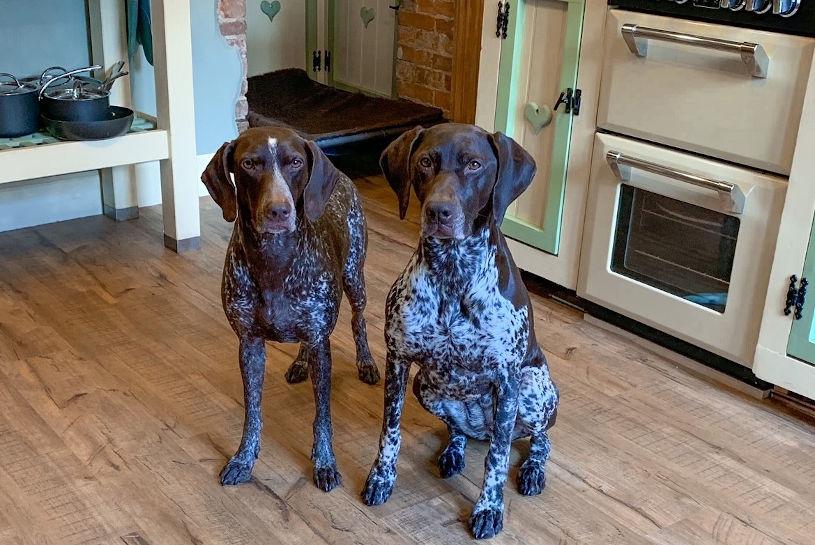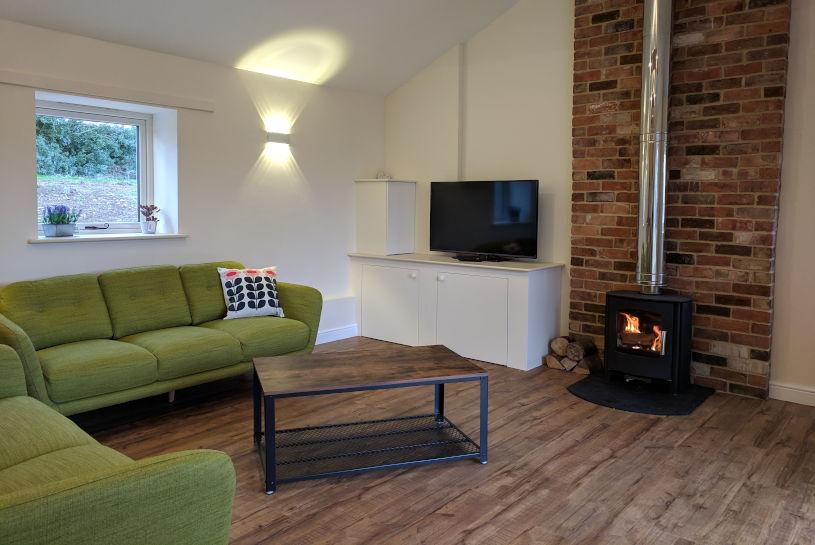A guide to luxury vinyl flooring and its benefits to pets and their owners.
What are luxury vinyl tiles?
Luxury vinyl tiles or LVT, is a manmade flooring option. It is available in a plank format like laminate flooring and traditional square tiles. Although a manmade synthetic product, LVT can have the realistic appearance of stone, ceramic or wood, thanks to production techniques.
LVT Vs. laminate
LVT is a more flexible product and has a more forgiving surface compared to the plastic-coated, pressed wood pulp construction of laminate. Being more durable than laminate means that vinyl flooring often has a much longer guarantee.
Glue down or vinyl click?
LVT is available in two varieties, depending on how it will be installed – glue down or click. Like laminate boards, vinyl click flooring panels lock into each other and because it is not permanently fixed to the floor, is also known as floating vinyl flooring. Contrary to popular opinion, click flooring does need sub-floor preparation and an underlay, unlike glue down vinyl that requires only subfloor prep. LVT Vs. click flooring – Which is best for dog owners? has more on this.
Why owners love LVT from Floors for Paws
- Maintaining LVT – LVT flooring is low maintenance and needs little beyond sweeping or vacuuming regularly, and mopping with plain water. Of course, as with any flooring, spills should be dealt with immediately. For the dos and don’ts of caring for LVT flooring, see How to clean vinyl floors – a guide for pet owners
- Durability – luxury vinyl flooring from Floors for Paws has a multi-layer construction, with layers heat fused together to give extra strength and durability.
- Aesthetics – available in real wood- or stone-effect designs, LVT offers high end looks for any style of interior. Our luxury vinyl planks can be used to create traditional designs such as herringbone, while our stone-effect tiles give the look of a ceramic floor.
- Kind to pets – a textured, anti-slip surface layer helps to stabilise dogs that are unsteady on the legs and the high density fleece backing gives comfort to ageing joints.
Why pets love LVT from Floors for Paws
Comfort – hard surfaces such a real wood or laminate floors, are uncomfortable to lie down on for prolonged lengths of time so LVT offers the older dog a more comfortable option. The soft comfort layer provides cushioning not found in other hard floors.
Textured surface for grip and stability – for arthritic senior dogs or dogs with hip dysplasia, it is essential to reduce the risk of injury through slipping. And young and old dogs alike will love the feeling of security they get from a stable, non-slip surface.
Warm – the backing prevents the LVT from feeling cold to the touch, like ceramic or porcelain tiles, making it nicer to lie on for any length of time. Dogs seem to love lying on it!
Pet-friendly LVT from Floors for Paws
Our luxury vinyl flooring range offers customers a choice of 6 stone-effect finishes and 6 wood-effect finishes to appeal to all tastes. To help you narrow your choice, order up to three free samples today.
https://www.floorsforpaws.com/luxury-vinyl-range/
Alternatively our friendly sales team is available via email at info@floorsforpaws.com or phone on 01522 300218










